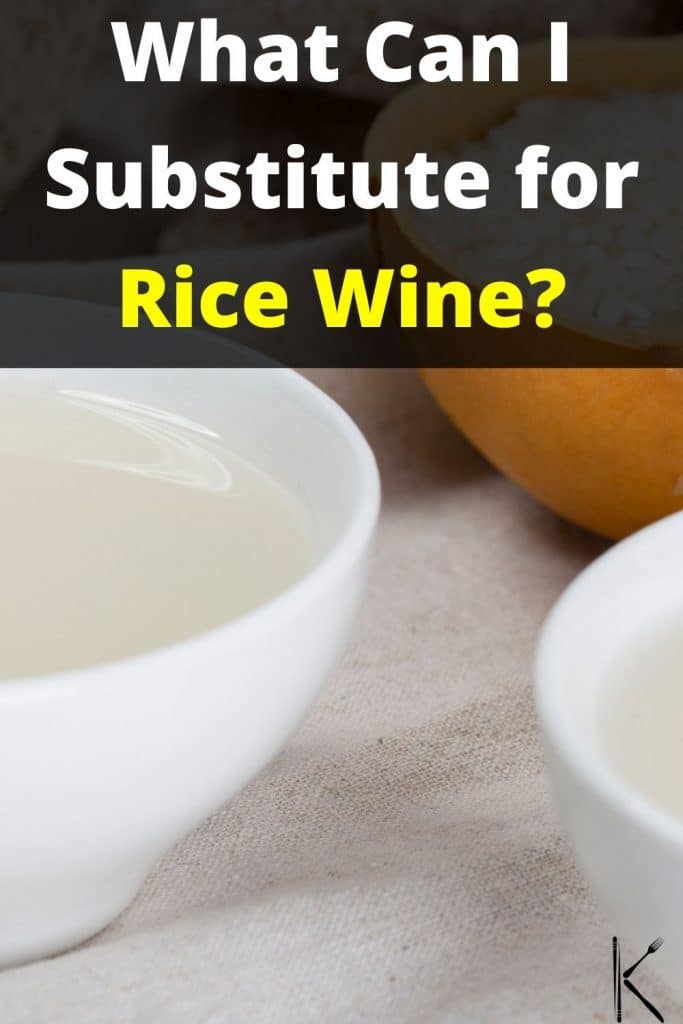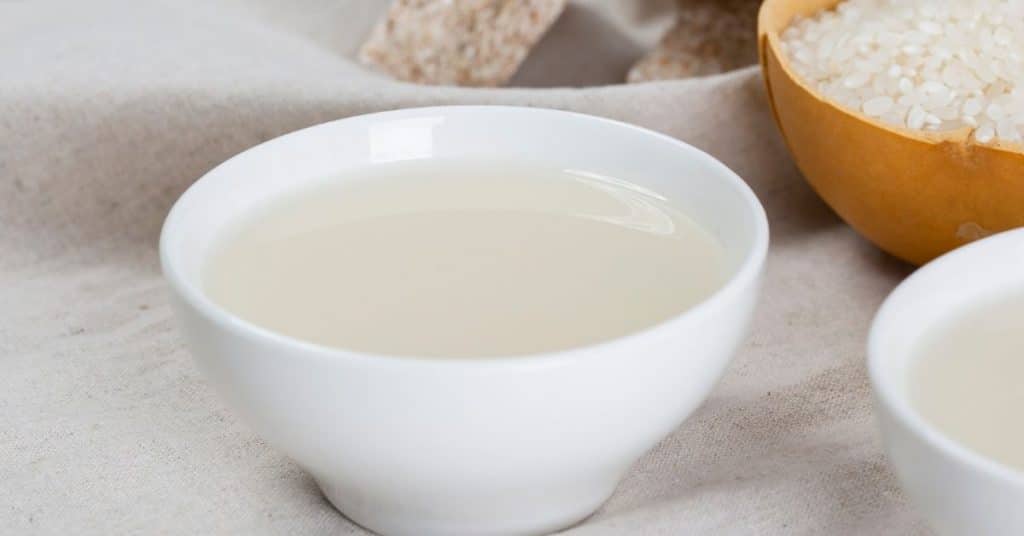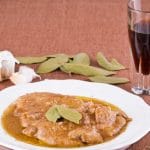In short, some great rice wine substitutes for both non-alcoholic and alcoholic options include pale dry sherry, gin, Japanese rice wine (sake and mirin), apple juice, and white grape juice. These alternatives can add depth of flavor to your dishes and work well as replacements for rice wine in various Chinese and Asian recipes.
Rice wine is an indispensable ingredient in Chinese cooking. Together with soy sauce, it forms the base of most Chinese recipes. It is used in small quantities of 1 or 2 tablespoons to add depth and complexity to dishes.
Even though you can’t specifically distinguish its flavor in a dish, you’ll just know that something is missing if it’s not there.
While it is easily obtainable in Chinese and Asian grocery stores or markets, it is not that easy to find at regular American or European supermarkets.
In the following article, you will find a list of great substitutes you can use instead of rice wine when you are having trouble finding it in your local store. Before we get there, let’s look at the different types of rice wine available.
What is Rice Wine?
Rice wine is made from the fermentation of glutinous rice. The sugars in the rice are transformed into alcohol by the addition of yeast.
Depending on the type, rice wine is clear or has a red, yellow, or brown hue. It is used in marinades to tenderize meat and to impart flavor to almost any dish. The alcohol content can vary greatly. It is generally in the region of 18 to 25% ABV (alcohol by volume).
Chinese cooking wine is a rice wine specifically for cooking. It is salty with a strong alcoholic flavor and is not intended for drinking.
Types of Rice Wine
Chinese cooking wines in Western grocery stores are generally rice wines made from fermented regular rice or glutinous rice. They can, however, be labeled as Rice Cooking Wine, Sweet/Glutinous Rice Cooking Wine, Shaoxing Wine, Cooking Spirit Mirin, or be without an English name at all.
Mijiu
Mijiu is the collective Chinese name for fermented rice wine. The drinking variety is made with red yeast which gives it a reddish color.
The clear white mijiu or white rice wine generally available in the US is used to mask the odor of meat and fish, without adding extra flavor and is 20 to 35% ABV.
Japanese Sake
With a taste similar to Chinese white mijiu, Japanese sake is a fermented rice wine with a lower alcohol percentage at 15% ABV.
Related: Sake substitute
Japanese Mirin
Japanese mirin is a sweet type of Japanese sake, with a lower alcohol percentage and higher sugar content. It is sweet, made from fermented glutinous rice, has a hint of tartness and acid as well.
See more: Substitute for mirin
Shaoxing Wine
Shaoxing rice wine is made from fermented glutinous rice and red yeast. It has an amber color and unique flavor blending sweet, sour, bitter, and savory notes.
Shaoxing is used as an alcoholic drink, cooking wine, and Chinese herbal wine. Compared to white rice wine, it imparts a lot more depth of flavor to recipes.
Fujian Cooking Wine
Fujian wine is made by glutinous rice fermentation with red yeast and a white yeast of Chinese medicinal herbs. It is dark brown and has a rich, somewhat sweet flavor.
Compared with Shaoxing, these cooking wines provide different flavors and can be used as an alternative to Shaoxing wines.
Special Cooking Wine
Chinese cooking wines are made with rice wine and a blend of ingredients that will vary according to the brand including cloves, star anise, cassia, black cardamom, Sichuan pepper, ginger, nutmeg, soy sauce, vinegar, and chili peppers.
Their taste is more like a seasoning sauce than wine, and they are often used as meat seasonings.
Versions made from black glutinous rice or jasmine glutinous rice are other available varieties.
The Difference Between Rice Wine and Rice Vinegar
Although both products are made from fermented rice, they are completely different in nature, taste, and function. The difference is in the way in which each one is produced. Rice vinegar is sometimes also called rice wine vinegar, however, it is vinegar and not a wine.
Reasons for Using Rice Wine
If it is your first time digging into some Asian recipes that call for rice wine, you may be wondering what purpose it serves and if it’s such a big deal to leave it out. These are the four main functions of using it in cooking:
1. Mask Strong Odors and Flavors
One main purpose of using Chinese rice wine is to mask the strong fishy or gamey smell and taste of meat and seafood. This happens through alcohol evaporation during cooking since alcohol has a lower boiling point (173 °F/78.5 °C) than water (212 °F/100 °C).
Once the temperature is above 173 °F, the alcohol evaporates quickly which makes the fishy/gamey components evaporate easily from food. This is the reason Asian-cuisine cooks spray the dry wine at the highest heat point during cooking of dishes such as stir-fry.
2. Add Flavor
Shaoxing wine has already been blended with an array of cooking spices which imparts a unique flavor composition to meaty and vegetarian dishes.
3. Enhance Existing Flavors
Using alcohol in cooking achieves a chemical reaction allowing certain foods to release flavors. The alcohol releases alcohol-soluble flavors from foods such as tomatoes, vanilla beans, and herbs that you will most likely not taste without this interaction.
The composition of animal fat is also altered with certain chemical reactions enhancing rich and unique flavors.
4. Preservation and Protein Denaturation
Alcohol can partly or entirely denature the proteins in food to improve its flavor or make it edible. It can also serve as a means of preservation preventing the growth of bacteria, microbes, or fungi.
Best Rice Wine Substitutes
Rice wine is used in every stir fry sauce, from classic Cashew Chicken and Chop Suey to Kung Pao Chicken, Chow Mein, soup, broths, and dumpling fillings.
Rice wine substitutes can be used in equal measures to replace the recommended amount in your recipe.
1. Pale Dry Sherry
Pale dry sherry is the most recommended substitute. It comes closest in flavor to Shaoxing wine, bringing a great depth of flavor to your dish.
Related: Dry sherry substitute
2. Gin
If your recipe calls for white-rice wine, gin is a good substitute. It is much closer in flavor to white rice wine than dry sherry.
3. Japanese Rice Wine (Sake and Mirin)
Although Japanese versions such as sake and mirin have a different flavor to Chinese rice wine, they can also be used as Chinese cooking wine substitutes. When using mirin, use slightly less and reduce any added sugar as it has a strong and sweeter flavor.
Best Non-Alcoholic Rice Wine Substitutes
As a non-alcoholic alternative, you can use apple juice or white grape juice. Both these juices are very sweet. Although the acid in the juice still acts as a tenderizer, the flavor will be different and sweeter.
Tips for Cooking With Rice Wine
- Adding too much rice wine can ruin the flavor of your dish. Always use it sparingly as per your recipe. If using slightly larger amounts make sure to sufficiently burn off the alcohol.
- Soups and light flavored dishes should not require rice wine in general. If you do need it in soups, it should be added while the soup is boiling to evaporate odors with the alcohol.
- When marinating meat, too much rice wine can mask the main flavors. Do not marinate the meat for too long and rinse it to prevent an alcoholic flavor from remaining in the final dish.
FAQs
The flavor will not be the same if you use dry white wine as a substitute, however, it can work in marinades if it is all you have available.
No, rice vinegar is not a suitable rice wine substitute. It will add a high level of acidity and most likely ruin your dish.
Rice wine has a high alcohol content, but the cooking process will cook out some of the alcohol. Recipes generally only use a small amount of the wine (around 1 or 2 tablespoons) for a dish that will serve between 3 and 4 people. With the cooking process and such a small quantity, you cannot taste the alcohol, and it is safe for children. You would probably struggle to find any Chinese take-out stir-fry meals that do not contain rice wine.
Shaoxing wine is one of the oldest types of rice wine in China. The lighter flavor of rice wine compared to Shaoxing wine can be compared to using regular or light soy sauce. One is somewhat stronger than the other, although they are the same product in essence.
Yes, you can skip rice wine in a recipe if you don’t have it on hand or prefer not to use alcohol. While rice wine adds a unique flavor to certain dishes, you can usually achieve acceptable results by using a substitute like dry sherry, mirin, or white wine, or simply omitting it and adjusting other seasonings to your taste.
Conclusion
Regardless of the type of rice wine or alternative liquid you choose for your dish, a small amount will add a great depth of flavor. For an authentic Asian flavor, stick to traditional Asian cooking substitutes.
If you don’t mind a slight flavor twist to your stir-fry or meat marinade, apple juice, grape juice, or white wine might be more readily available options.
Up next:

*image by [email protected]/depositphotos









